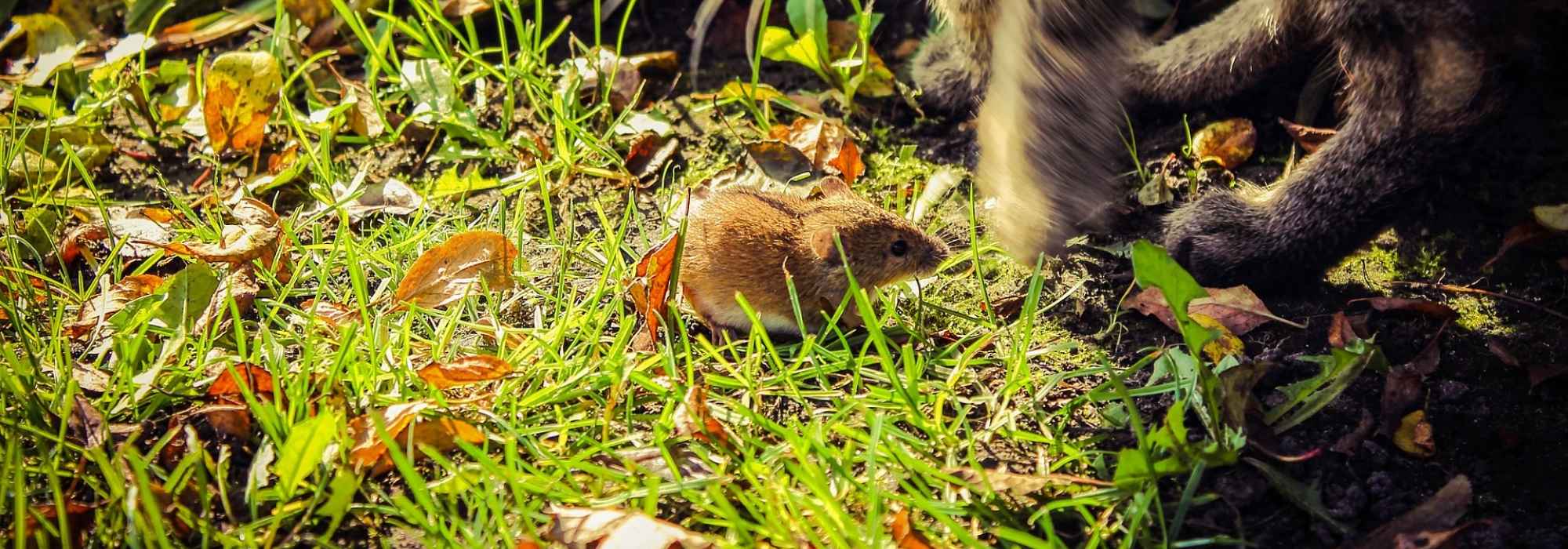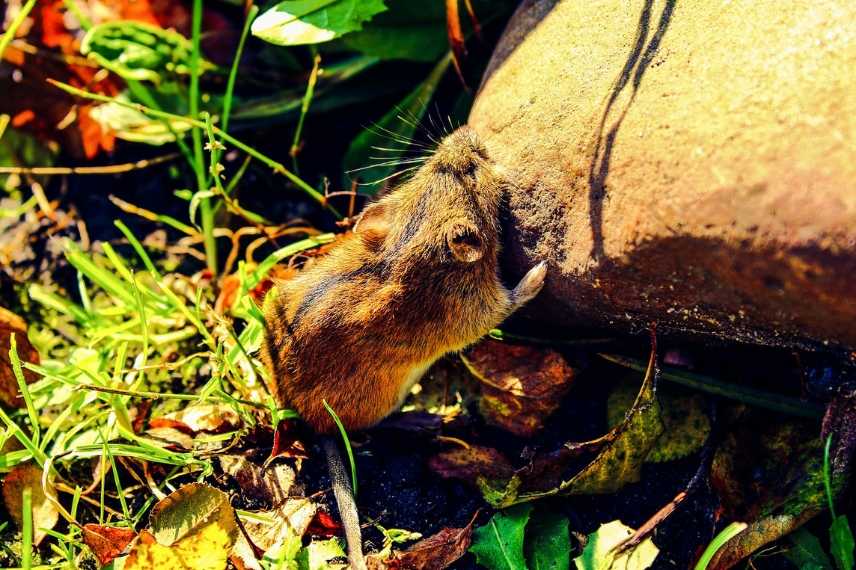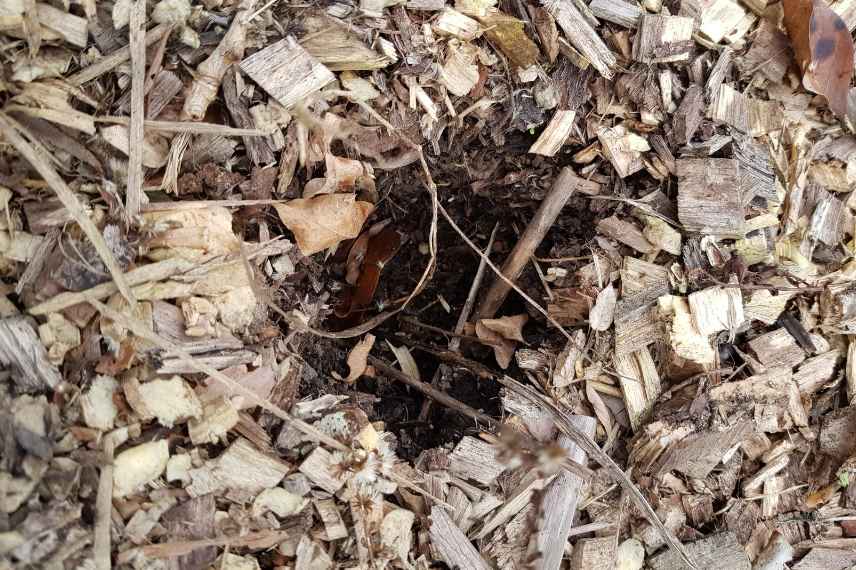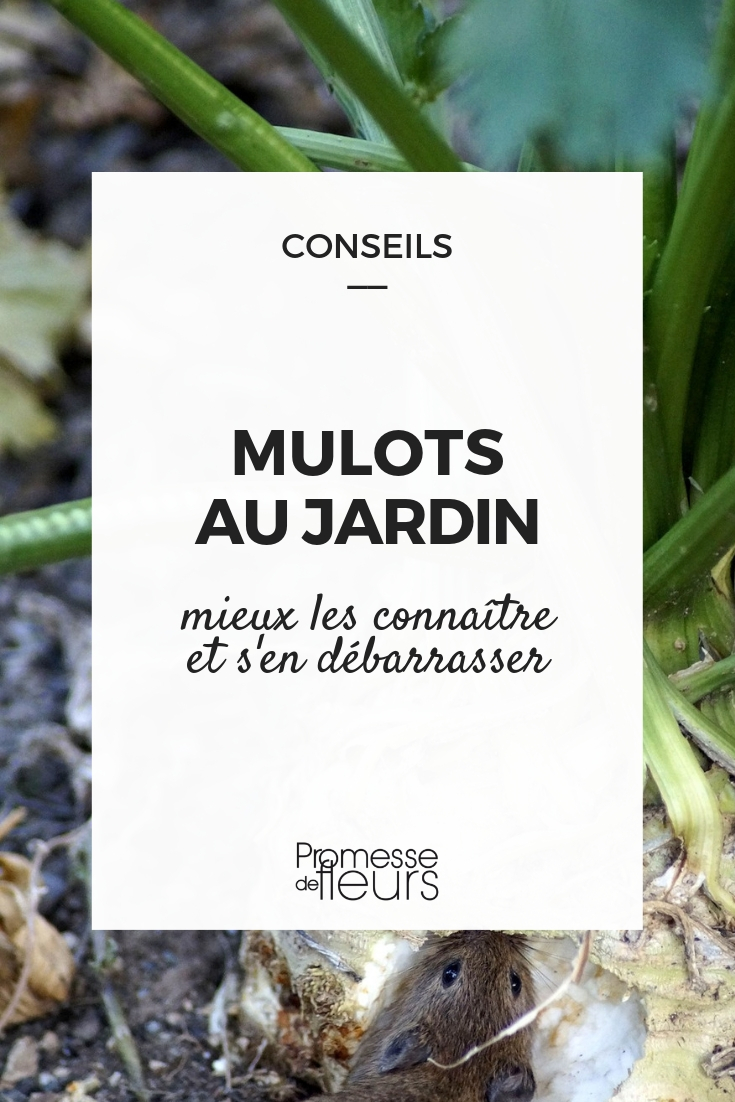
Wood mice: getting to know them better and how to get rid of them
Tips and tricks
Contents
Your vegetable garden is your pride. But for some time, your beautiful vegetables have been wilting for no apparent reason and even some of your cherished plants seem to have completely lost their roots. Armed with your detective’s magnifying glass, you crawl around on all fours to inspect the whole of your bed, only to make the following alarming discovery: holes a few centimetres across are visible all over your vegetable garden and in your tulip beds. No doubt remains: you’re experiencing an invasion of field mice.
First of all: congratulations! Your garden is natural and full of life. But you’ll still need to deal with this minor problem… You’re in the right place: this article aims to teach you more about these friendly little creatures and help you counter them effectively.
But what is a wood mouse?
Field mice all belong to genus Apodemus, which comprises around twenty species in family Muridae. Field mice are small mammals about 10 cm long (excluding tail) that hop, swim and… run fast. Their main characteristics are a very long tail (up to 9 cm) and large rounded ears. Field mouse has a white venter and reddish-brown fur with a black dorsal stripe in Apodemus agrarius, the striped field mouse most often encountered in our gardens. If garden is sufficiently wooded, one may come across Apodemus sylvaticus, the wood mouse, which closely resembles previous species but without dorsal stripe.

Striped field mouse (Apodemus agrarius)
Oli’s little note: people often confuse all rodents and call mulots anything that scurries by their feet. Thus voles and even sometimes harvest mice (a tiny ball of hair) are wrongly called “mulots”.
Field mouse has short lifespan, about one year on average, but bad news: to compensate it reproduces at furious pace! A female can sometimes have up to six litters of six young per year (and yes, 6 × 6 = 36!). It lives in burrows it digs or… that it nicks from mole or vole. Field mouse eats a bit of everything: small fruits, berries, seeds, insects, moss and… roots, hence sometimes dramatic presence in our gardens.
Primarily nocturnal in habits (more active by day in summer), field mouse is fairly discreet; often small damage it causes is what alerts us to its presence.
Read also
How to protect bulbs from rodents?Damage caused in the garden
Field mice are rodents. Rodents are mammals with a pair of incisors that grow continuously throughout life; these animals therefore have to “gnaw” whatever they can to keep that growth in check. (“Finon, fa defient diffifile…”)
And in garden, what they get their teeth on can be a young root of carrot or parsnip as well as your small cabbages recently transplanted. Field mice like to nibble roots of vegetables and perennials (less so trees and bushes, there voles take over…) but also some bulbs, notably tulips.

Field mice damage to root vegetables
Les symptômes de présence de mulots sont faciles à reconnaître :
- Small holes a few centimetres across in soil, sometimes with visible tunnel.
- Wilted vegetables and plants
- Damage to root vegetables (carrots, beetroot, parsnips, leek, …), sometimes cut off flush with collar
- Flower bulbs completely eaten.

Field mouse hole
Oli’s note: paradoxically, good gardening practices can exacerbate presence of field mice in garden. Leaving some grassy areas fallow and practising good mulching in vegetable patch and in your borders will be beneficial for them. Fortunately, if your garden is welcoming for field mice, chances are it will also be for their natural predators (see below). In conclusion, no need to worry, everything will eventually settle down.
How to get rid of it?
Several effective methods are available, from the most sneaky to the gentlest. It is obviously the gentle, natural solutions that should be favoured in your garden.
- Trapping
There are two types of traps for field mice available commercially. Kill traps, that is those that will kill the animal and also called guillotine traps, should be placed directly in a field mouse hole or run. Non-lethal traps with bait (piece of apple, cat kibble, …) simply confine the animal in a small cage and should also be placed near field mouse runs. All that remains is to release your captive field mouse far away from your precious vegetables. As you will have understood, this type of trap is ultimately of limited effectiveness because it generally catches or kills only one field mouse at a time. If you are infested, this may take some time…
- Welcoming natural predators or… less natural ones
Field mice are part of the food chain like all living beings. Their natural predators are the fox, the stone marten or some nocturnal raptors such as the tawny owl and the barn owl. To welcome these two owls to your garden, consider installing specific nest boxes in trees for the tawny owl and in an old shed or open barn for the barn owl. And, of course, a total ban on pesticidal products is required (anyway, it is forbidden) and avoid lighting your garden all night like Charles-de-Gaulle airport. A pair of owls can eat up to 800 small mammals in a year. To find out whether you have owls, you can listen for and recognise their call, but you can also find regurgitated pellets in your garden. If you are not easily put off and are curious, you can dissect these pellets to get an indication of the owl’s last meal. Indeed, everything the bird cannot digest (bones, teeth, hair, …) will be found in the pellet. All that remains is to reassemble the puzzle (a great activity to do with children!).
But a four-legged tenant of our gardens, introduced by humans, has also become an outstanding predator of the field mouse. I name: the cat. Sadly, the cat also tends to catch another small mammal very useful to the gardener: the shrew.

The fox is an excellent predator of rodents! Its rodent-hunting technique, which consists of hopping with its feet together and landing on its front paws, is called… mulotage.
- The gentle approach: repellents
Like voles and moles, the field mouse hates the smell of black elder, Sambucus nigra. You can spot the runs or holes made by these little creatures and throw in a few crushed elder leaves. Better still, a manure made with fresh elder leaves will be even more effective. Here is the recipe:
- Place 200 g of fresh black elder leaves in a cloth bag
- Let the leaves macerate in 1 litre of rain water for 3 days
- Spray this manure, undiluted, into the holes and runs of field mice
- Repeat three times at two-day intervals.
please note: Any black elder, even the most refined cultivars, can be used for this purpose.
You can also plant repellent plants for field mice such as Incarvillea or Crown Imperial (Fritillaria imperialis) which can secrete odorous substances that deter field mice, voles and moles. As well as Euphorbia lathyris, called mole plant, or simply cultivated or ornamental garlic.
For your flower bulbs, you can try planting them in a sort of small wire basket. The field mouse, not keen to make life complicated, will move on rather than struggle to get through the mesh.
→ to read, to learn more: “How to protect bulbs from rodents”
- Subscribe!
- Contents
































Comments